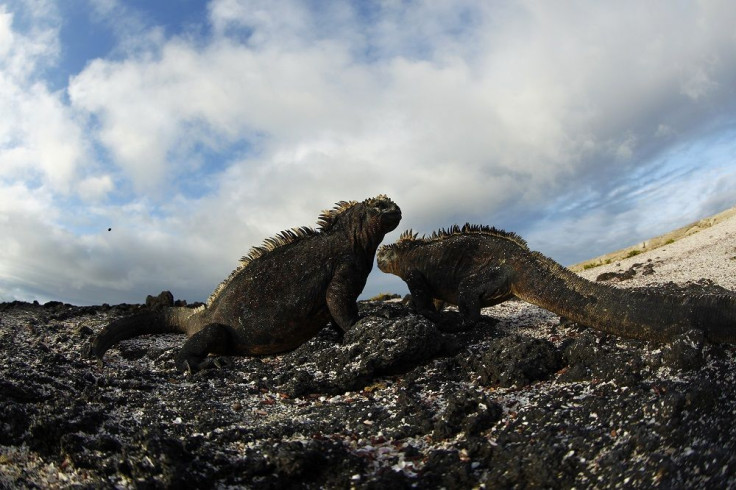Galapagos Island’s Wolf Volcano Erupts; No Risk To Pink Iguanas [VIDEOS]

Officials of the Galapagos National Park assured that despite the Monday eruption of the island’s Wolf Volcano, there is no risk to its human population, the pink iguanas that are endemic to the place and its tourism. Other than the pink iguanas, the island is home to yellow iguanas and giant tortoises.
It was the volcano’s first eruption in 33 years, the last being in 1982. Wolf Volcano first erupted in 1797. Park animals would likely not be affected by the lava flow which is moving toward the southeast, reports The Wall Street Journal. Despite the assurance by park officials, the Environment Ministry asked tourist operators to be cautious.
Found in the Pacific Ocean, about 1,000 kilometres off the coast of Ecuador, the volcano is elevated 1,707 metres above sea level and located on Isabela Island. The pink iguanas and other unique flora and fauna of the island helped inspire the theory of evolution of Charles Darwin who visited in 1835 the island – one of the regions in the world with a large number of active volcanoes.
Reuters reports that a dark plume about 10 kilometres high was hovering overhead. The Geophysics Institute warned that if the lava flow reaches the sea, it could harm its marine life. It added that the ash cloud could fall on the pink iguanas, which belong to the species Conolophus marthae.
Isabela Island, the biggest in the Galapagos, has four other volcanoes. These are Darwin, Alcedo, Cerro Azul and Sierra Negra, reports Sky News. In April, Sierra Negra exhibited unusual seismic activities.
To contact the writer, email: vittoriohernandez@yahoo.com






